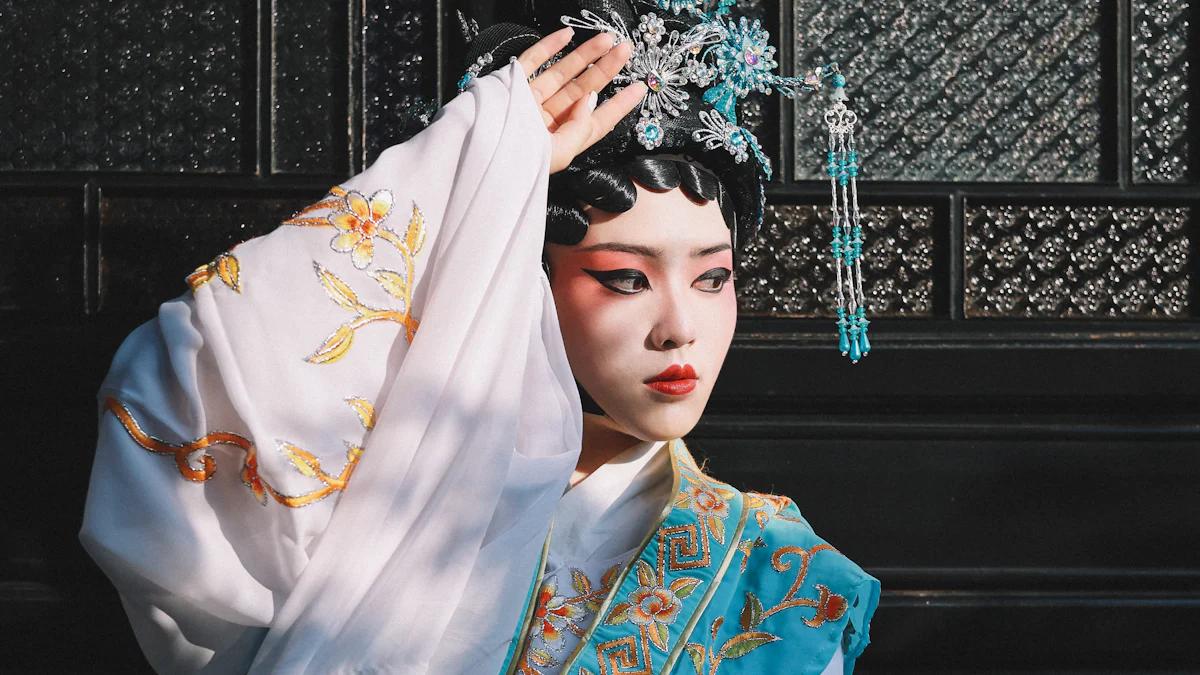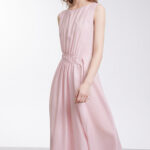 Embroidery has been an integral part of hanfu skirt design, embodying centuries-old traditions and cultural symbolism. The intricate artistry of Hanfu embroidery reflects not only skilled craftsmanship but also storytelling through stitches. The significance of embroidery in hanfu skirts goes beyond mere decoration, serving as a visual narrative of Chinese mythology and history. This blog delves into the techniques, motifs, and materials used in Hanfu embroidery to unravel the mystique behind these exquisite creations.
Embroidery has been an integral part of hanfu skirt design, embodying centuries-old traditions and cultural symbolism. The intricate artistry of Hanfu embroidery reflects not only skilled craftsmanship but also storytelling through stitches. The significance of embroidery in hanfu skirts goes beyond mere decoration, serving as a visual narrative of Chinese mythology and history. This blog delves into the techniques, motifs, and materials used in Hanfu embroidery to unravel the mystique behind these exquisite creations.
Techniques and Materials
In the realm of Hanfu skirt embroidery, hand embroidery stands as a pinnacle of artistry. Artisans meticulously craft each stitch by hand, infusing the fabric with intricate patterns that tell tales of ancient Chinese culture. The delicate nature of hand embroidery allows for unparalleled detail and precision, creating mesmerizing designs that captivate the eye.
When it comes to opulence and grandeur, gold and silver threads reign supreme in Hanfu skirt embellishments. These metallic threads add a touch of luxury to the garment, shimmering under light to exude elegance and sophistication. The use of gold and silver threads not only elevates the visual appeal but also symbolizes prosperity and fortune, embodying traditional values deeply rooted in Chinese heritage.
Moving on to the symbolic language of Hanfu embroidery, dragons and phoenixes take center stage as iconic motifs. Dragons represent power, strength, and good luck in Chinese culture, while phoenixes symbolize rebirth and grace. The inclusion of these mythical creatures in Hanfu skirts not only adds a touch of mystique but also conveys auspicious meanings that resonate with wearers.
In contrast to the majestic symbolism of dragons and phoenixes, floral patterns offer a softer aesthetic in Hanfu skirt embroidery. Peonies, lotuses, and plum blossoms are commonly depicted in floral motifs, each carrying its own significance. Peonies symbolize wealth and prosperity, lotuses represent purity and enlightenment, while plum blossoms embody resilience and hope. The harmonious blend of these floral elements creates a tapestry of beauty that celebrates nature’s bounty.
When it comes to the foundation of Hanfu skirt embroidery, the choice of fabrics plays a crucial role in enhancing the overall effect. Luxurious silks provide a smooth canvas for intricate designs to unfold gracefully, while satin fabrics offer a subtle sheen that accentuates the richness of embroidery. The selection of high-quality fabrics ensures durability and longevity for these exquisite creations.
In tandem with premium fabrics, the use of threads is equally significant in Hanfu skirt embellishments. Fine silk threads allow artisans to execute intricate details with precision, creating a visual feast for admirers. The vibrant colors and lustrous sheen of silk threads bring life to embroidered motifs, adding depth and dimension to Hanfu skirts.
Cultural Significance
Symbolism in Embroidery
Mythological Scenes
During the Qin and Han Dynasties, the art of embroidery flourished, with intricate designs adorning garments to signify social status and rank. The elaborate needlework on hanfu skirts depicted mythological scenes, bringing ancient tales to life through vibrant threads. Each stitch told a story of power, grace, and historical significance, weaving together a tapestry of cultural heritage that transcended generations.
In the Song Dynasty, women embraced the beauty of embroidered motifs, wearing Beizi adorned with symbols of prosperity and fortune. The delicate craftsmanship reflected not only personal taste but also societal norms, where embroidery served as a visual language of elegance and refinement. Mythical creatures like dragons and phoenixes graced the fabric, embodying auspicious meanings that resonated with wearers across different dynasties.
Historical Depictions
Indicators of Wealth
Throughout the Eastern Zhou Dynasty, embroidered garments became synonymous with wealth and prestige, showcasing intricate patterns that denoted social standing. The widening sleeves of Shenyi and Mianfu styles symbolized elegance and sophistication, while jade embellishments added a touch of luxury to everyday attire. The fusion of northern and southern styles during the Sui and Tang Dynasties led to multi-layered dresses embellished with colorful patterns, reflecting a harmonious blend of cultural influences.
In the Yuan Dynasty, Mongolian zhi fu introduced elements from national clothing, enriching Hanfu embroidery with new textures and designs. The incorporation of Mongolian fashion into Chinese attire created a unique aesthetic that celebrated diversity and unity. Embroidered details on men’s jism highlighted intricate craftsmanship and attention to detail, emphasizing the importance of sartorial elegance in conveying social status.
Modern Influence
In the realm of contemporary fashion, Hanfu skirt embroidery continues to captivate audiences with its fusion of traditional artistry and modern aesthetics. The marriage of Fusion with Modern Fashion brings a fresh perspective to Hanfu skirts, blending ancient embroidery techniques with innovative design concepts. This harmonious union not only revitalizes the cultural heritage of Hanfu embroidery but also paves the way for a new era of sartorial expression.
Preservation of Tradition remains at the core of modern Hanfu skirt designs, honoring centuries-old craftsmanship while adapting to evolving fashion trends. By incorporating elements from past dynasties into current styles, designers pay homage to the rich history and cultural significance embedded in each embroidered motif. The seamless integration of tradition and innovation ensures that Hanfu skirts remain timeless pieces that transcend temporal boundaries.
On a global stage, Hanfu skirt embroidery has garnered International Fashion Shows acclaim for its exquisite beauty and cultural depth. International designers and fashion enthusiasts alike have embraced the allure of Hanfu embroidery, showcasing these intricate creations on prestigious runways around the world. Cultural Festivals dedicated to celebrating traditional Chinese artistry further amplify the global recognition of Hanfu skirt embroidery, fostering cross-cultural appreciation and understanding.
- Highlighting the essence of Hanfu skirt embroidery, it showcases a timeless art form that intertwines cultural narratives with exquisite craftsmanship.
- Embracing a legacy that spans centuries, each embroidered motif echoes the rich tapestry of Chinese history and tradition.
- Pondering the horizon, the future of Hanfu skirt embroidery gleams bright, promising a continued celebration of heritage through threads of elegance.






